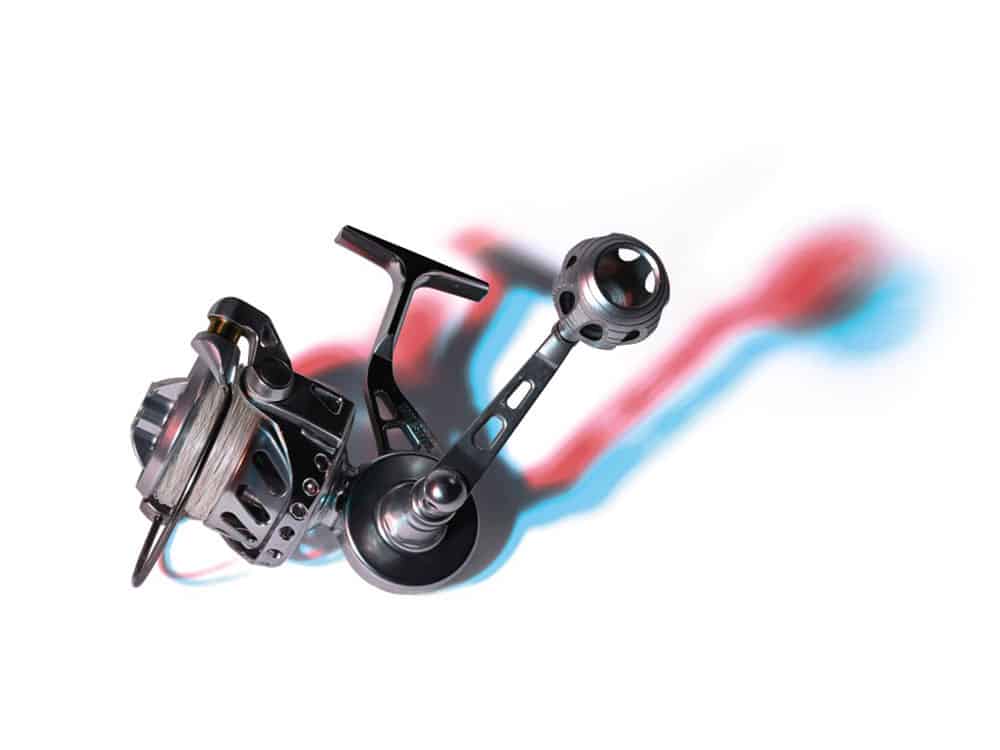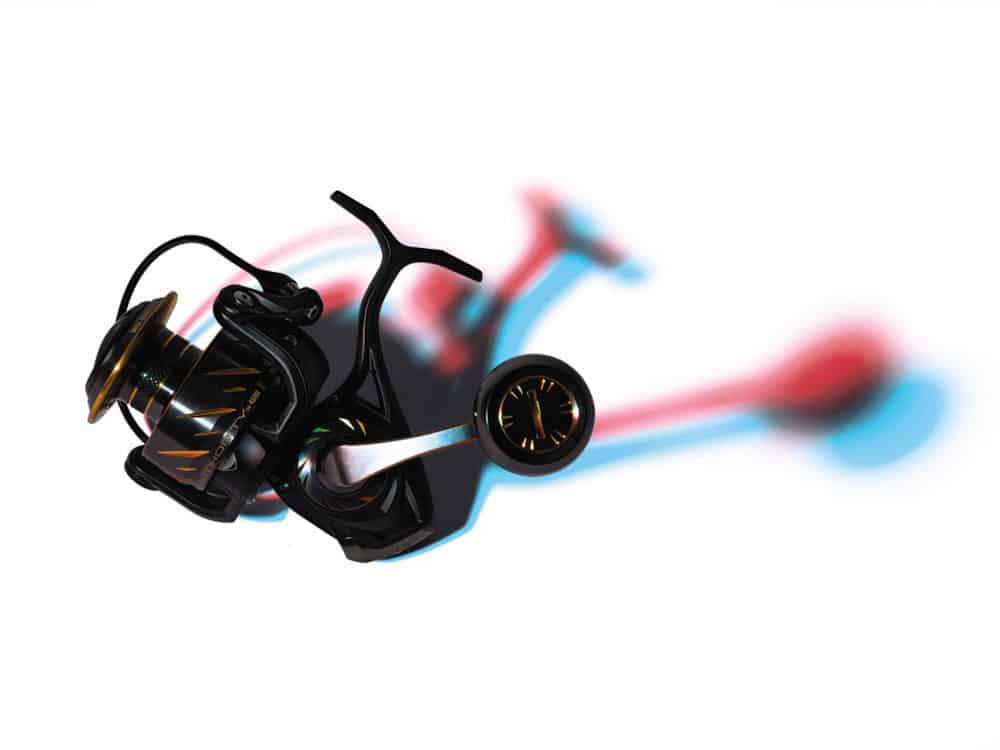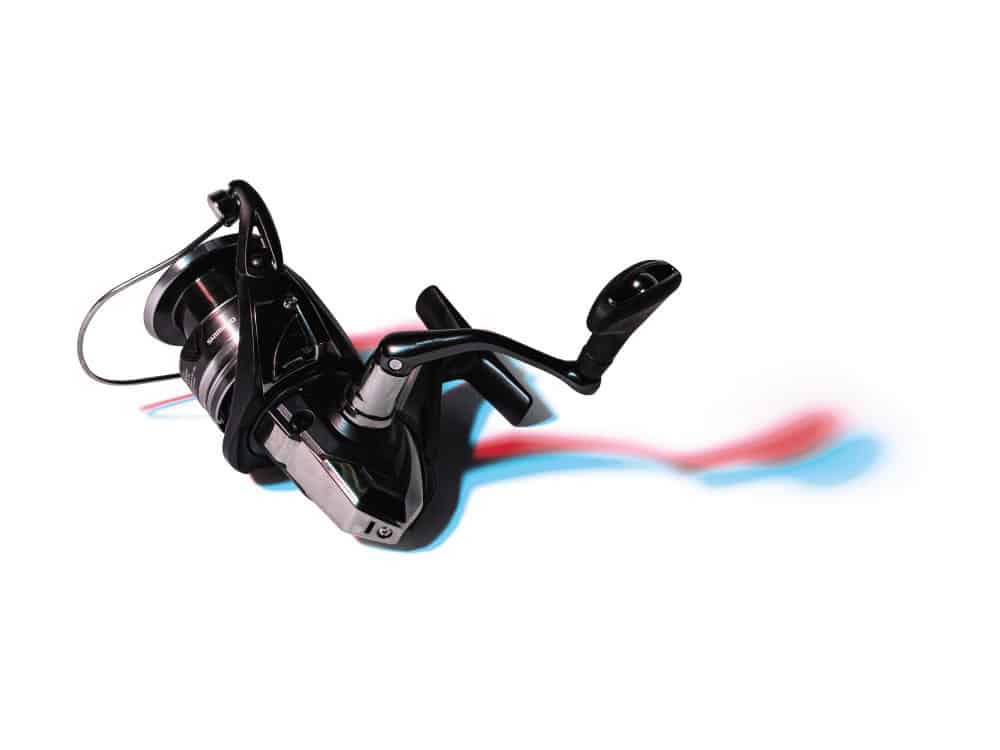
Spinning reels look much as they did 100 years ago. But modern spinners are marvels of technology, built with lightweight but strong materials, enhanced gearing, and drag systems capable of stopping the biggest fish.
Prior to World War II, Americans used revolving-spool reels for the bulk of their saltwater angling. But after the close of the conflict in Europe, fixed-spool reels, or spinning reels as they are more commonly known, hit our shores. Because they didn’t have the rotating mass of a conventional reel, they allowed anglers to cast light baits farther than ever before. They quickly gained popularity and eventually became commonplace in both fresh and salt water.
Many credit Albert Holden Illingworth, an English baron, with inventing the spinning reel in 1907. He received inspiration for the design after watching a loom, figuring that a fishing reel could utilize a similar shuttle. His invention is remarkably similar to the spinning reels we know today, complete with an oscillating spool and a front-mounted drag.
Spinning-reel technology continued to develop, with the hotbed of activity occurring in France. Bache Hamilton Brown, rightly known as the father of spin-fishing in America, went to the war-torn country to create his own reels after WWII. Soon he was bringing his reels to the States under his name, where they rose in popularity. His company was ultimately purchased by Lionel, of model railroad fame, and enjoyed success with the Airex Beachcomber in 1947.
Despite the availability of the Beachcomber, imports continued through the 1950s and beyond. Larger saltwater-size models coming from makers like Mitchel, Luxor and D.A.M. quickly dominated the surf scene. But in 1961, Penn introduced a spinning reel that gave anglers an American-made option that was perfect for the salt.

The Penn Spinfisher 700, or “Greenie” as it was known due to its distinctive coloration, was an instant hit. It was eventually succeeded by the 704 and then 706, both exceedingly popular models. But if they had an Achilles’ heel, it was the lack of waterproofing. Salt water could get inside the reel if not well-maintained and wreak havoc on the inner workings.
It didn’t seem to matter much, and you can still find vintage 700s on the beaches of the Striper Coast. Still, Penn wanted to improve on a good thing. Over the years, it added more ball bearings for smoother operation.
And more recently, it added full IPX8-rated watertight seals to its flagship models, offering silky-smooth performance that can handle just about anything.
Read Next: Tuna Popping: 4 Things to Know When Buying a Spinning Reel

Other big advances in the world of spinning reels come in the form of high-tech materials. Carbon fiber is lightweight yet strong, providing the rigidity needed to keep gear trains aligned even when under pressure. And because it can’t corrode, it’s an excellent choice for harsh environments like salt water. Reels in Shimano’s MagnumLite series use the company’s carbon-infused CI4+ body to keep weight down for all-day sessions while standing up to powerful runs.
Even some of the most advanced reels still resemble their early ancestors. The now-iconic Van Staal burst onto the scene in 1991, but it looks like it could have been built back in the 1950s. Despite outwardly resembling some of the earliest models, the Van Staal spinners managed to be sealed enough to be reeled underwater, a boon to the wetsuiters of Montauk and beyond. And the simplistic, one-piece design can even handle the stresses created by a fired-up pelagic.









